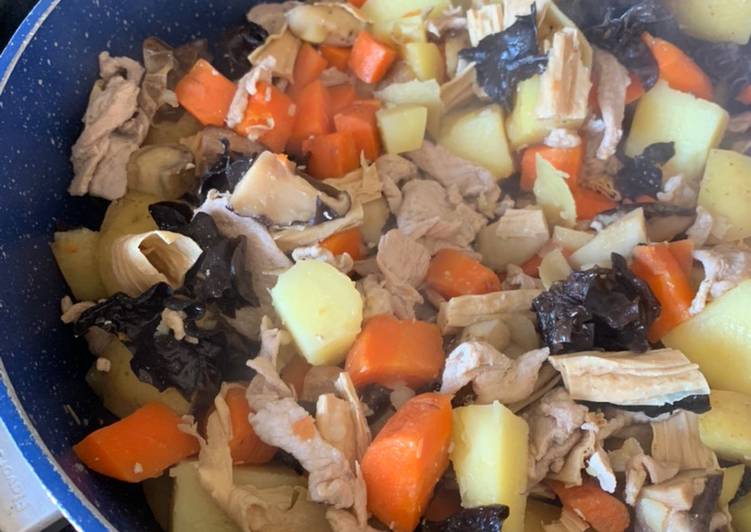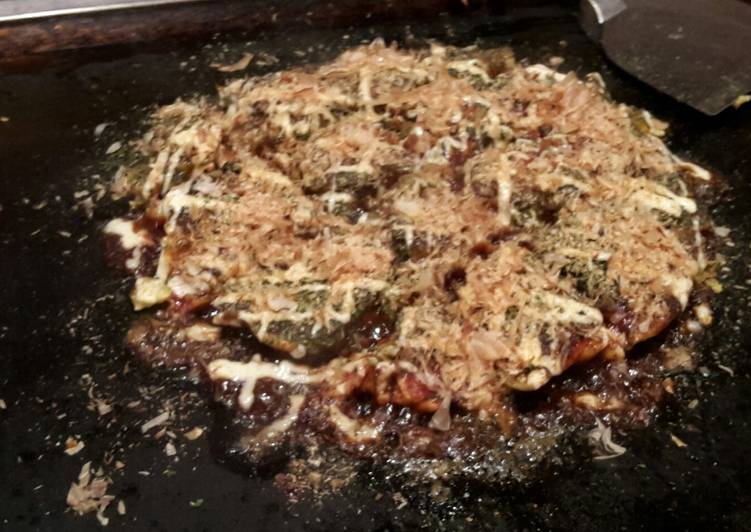
Hey everyone, it’s Jim, welcome to my recipe site. Today, I will show you a way to prepare a special dish, nimono (煮物), traditional japanese root vegetable dish. It is one of my favorites. This time, I’m gonna make it a bit unique. This is gonna smell and look delicious.
Nimono (煮物), Traditional Japanese Root Vegetable Dish is one of the most popular of current trending meals in the world. It’s simple, it’s fast, it tastes delicious. It is appreciated by millions every day. Nimono (煮物), Traditional Japanese Root Vegetable Dish is something that I’ve loved my entire life. They are fine and they look wonderful.
Nimono (煮物) is a simmered dish in Japanese cuisine. A nimono generally consists of a base ingredient simmered in shiru stock flavored with sake, soy sauce, and a small amount of sweetening. The nimono is simmered in the shiru over a period of time until the liquid is absorbed into the base.
To begin with this recipe, we have to first prepare a few components. You can cook nimono (煮物), traditional japanese root vegetable dish using 20 ingredients and 8 steps. Here is how you can achieve that.
The ingredients needed to make Nimono (煮物), Traditional Japanese Root Vegetable Dish:
- Get Meat (choose one)
- Get Chicken thigh, thinly sliced
- Take Pork chop, thinly sliced
- Make ready No meat is fine too!
- Get Vegetables
- Make ready 2 carrots
- Take 4 potatoes
- Get 1 ft stick burdock root (optional but would be nice to have)
- Make ready 8 shiitake mushrooms (optional)
- Take 100 g lotus root (optional but would be nice to have)
- Get 130 g konjac (optional because it’s hard to find outside of Japan!)
- Make ready Soup (but it’s not a soup)
- Prepare 1-2 cups water
- Make ready 1/4 cup sake
- Prepare 3 tbsp soy sauce
- Prepare 1 tbsp salt
- Take 5 tbsp sugar
- Make ready 3 tbsp hondashi powder
- Prepare 2 tbsp chicken broth powder (optional)
- Take 3 tsp mirin (optional)
It's made by boiling dried baby. This Japanese home cooking technique is perfect for chilly weather. While Japanese home-cooked meals will often be centered around fish or meat, they may also be accompanied by several traditional side dishes, many of which are vegetable-based. Japanese Chicken and Root Vegetable Stew.
Instructions to make Nimono (煮物), Traditional Japanese Root Vegetable Dish:
- Cut all vegetables into bite size pieces. The potatoes are okay being a tiny bit bigger than the rest of the vegetables.
- Cut meat into thin bite size slices. Grab a large pot that will fit everything in. In that pot, on medium heat and with a little bit of oil, cook the sliced meat.
- Once the meat is cooked, throw all of the vegetables and water into the pot. Rise the heat to high.
- We don’t need that much water because we aren’t boiling the vegetables, we will be simmering/steaming them. In the hot water, add in all the seasonings like soy sauce, sugar, sake, etc.
- Give the pot a toss to mix everything evenly. Then, close the lid keep the heat on high. The vegetables are only simmering on the bottom where it is in contact with the liquid, so use something like a large wooden spoon to mix everything around, but not too vigorously or else the vegetables will begin to crumble and break.
- After some time, the vegetables will absorb the liquid and a lot of it will also be evaporated. When you notice that the liquid is getting low, add about half a cup of water again, to continue simmering the dish.
- Once all the vegetables are super soft (potatoes get sliced by a wooden spoon with ease), the dish is ready!
- Serve, and enjoy.
This nimono, or braised root vegetable stew, is the perfect way to use up the last of your winter C. Andrew This cooks them more evenly and quickly than a traditional pot lid. You can buy a traditional wooden otoshibuta, or a cute. A classic Japanese side dish, Hijiki Seaweed Salad features a type of wild seaweed that is highly nutritious. The Japanese have been enjoying this traditional food as a part of a balanced diet for centuries.
So that is going to wrap this up with this special food nimono (煮物), traditional japanese root vegetable dish recipe. Thanks so much for your time. I’m confident that you will make this at home. There is gonna be more interesting food in home recipes coming up. Don’t forget to bookmark this page in your browser, and share it to your loved ones, friends and colleague. Thank you for reading. Go on get cooking!


